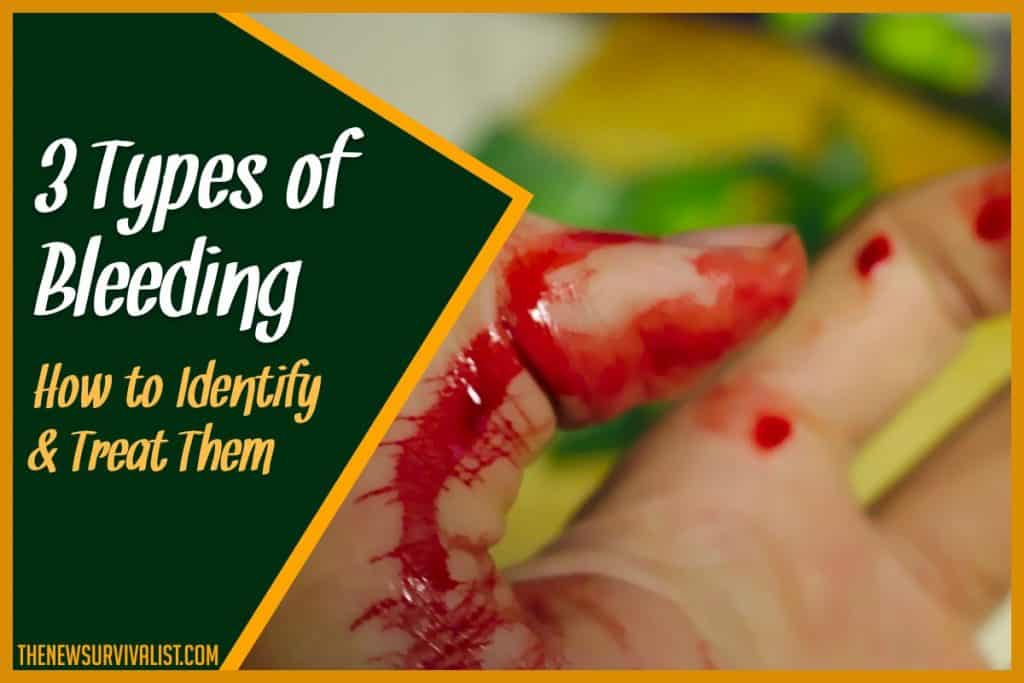Bleeding is the loss of blood from the systemic circulation. It can occur either externally, or internally. Depending on the degree of the bleed and its cause, the effect can be unremarkable, or life-threatening. In this article, we will be discussing how to identify each, and how to manage them in an emergency setting, a piece of valuable knowledge for preppers and survivalists alike.
There are three types of bleeding; arterial, venous, and capillary. All of which presents differently and varies in terms of severity, and the risk associated if not treated promptly. For preppers, being able to identify the type of bleeding will help in choosing the correct life-saving interventions.
A person only needs to lose 1/5th of their total blood volume to experience serious complications that can ultimately lead to death. This volume will differ depending on the body weight. In general, adults have around 4,500 to 5,700ml of blood.
Identifying the type of bleed is the first step in choosing the correct management, and assessing the prognosis of the wounded.
Arterial Bleeding
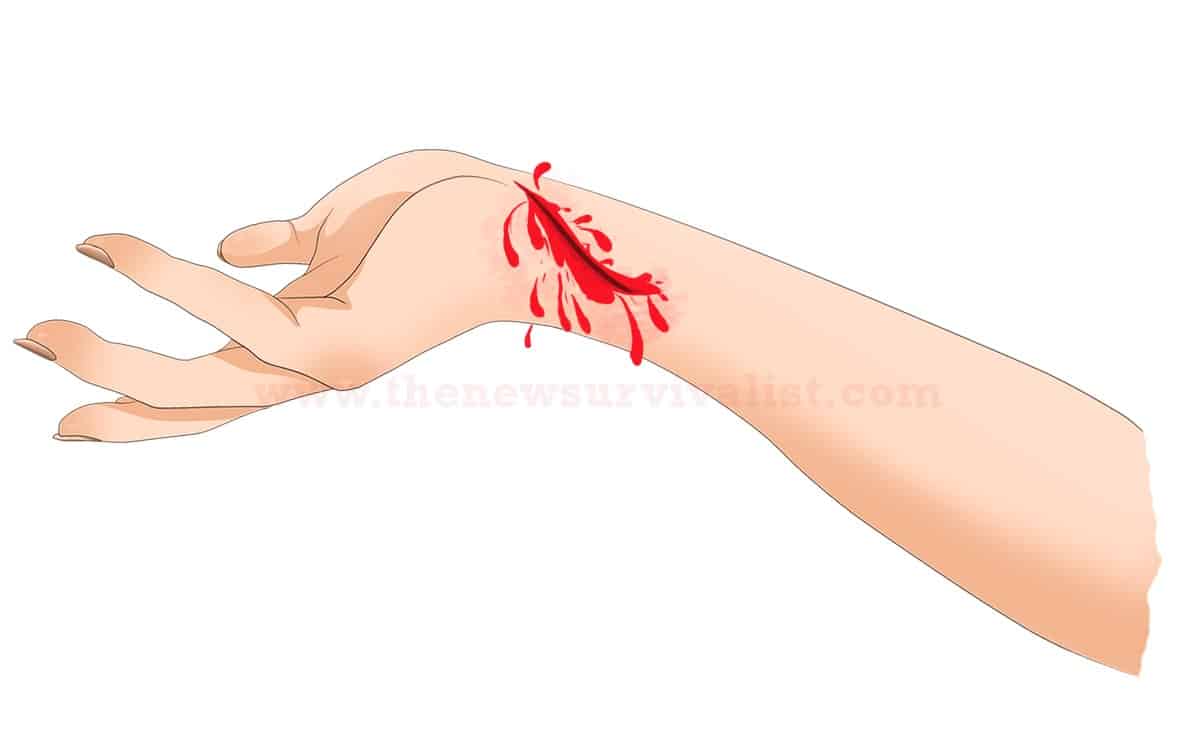
The arteries are large thick vessels that function to deliver oxygenated blood throughout the body. As such, the pressure within these vessels is the greatest.
This type of bleed comes in spurts and coincides with the heartbeat of the person. The blood spurts far and is bright red due to the rich oxygen within it.
Another way to identify arterial bleed is by the location and severity of the wound. Arteries are generally located deep within the muscles, near the bone, which is why a deep wound should be suspicious of having a damaged artery. There are also shallow arteries around the neck, under the armpits, the elbow joint, the wrist, and behind the knees.
Arterial bleeds are the most difficult to control. It is also the most severe and life-threatening among the types of bleeding. This is due to the high pressure, and the rapid loss of oxygenated blood.
Treatment
A way to control arterial bleeding is through applying direct pressure on the wound with the help of thick gauze, cotton pad, or clothes. This is then secured using an elastic bandage, a makeshift rope, or packing tape that wraps around the wound. However, care must be observed in doing so because too much pressure can lead to poor circulation distal to the location of the wound.
The above is only true for smaller lacerations or puncture wounds. In case of a large laceration or a through and through puncture wound like a gunshot wound, it must first be packed or filled tightly with cotton balls, gauze, or in extreme cases, cloth. This is necessary since the arteries are deeper, and it is harder to apply pressure the conventional way.
In cases of amputations, a tourniquet should be applied to the amputated limb. This can be done by wrapping cloth, or a makeshift rope tightly above the stump of the amputated limb until the bleeding stops.
Lastly, the person must be brought to a hospital where surgeons can suture the arteries. This is the best, and the only way to properly stop an arterial bleed.
Venous Bleeding
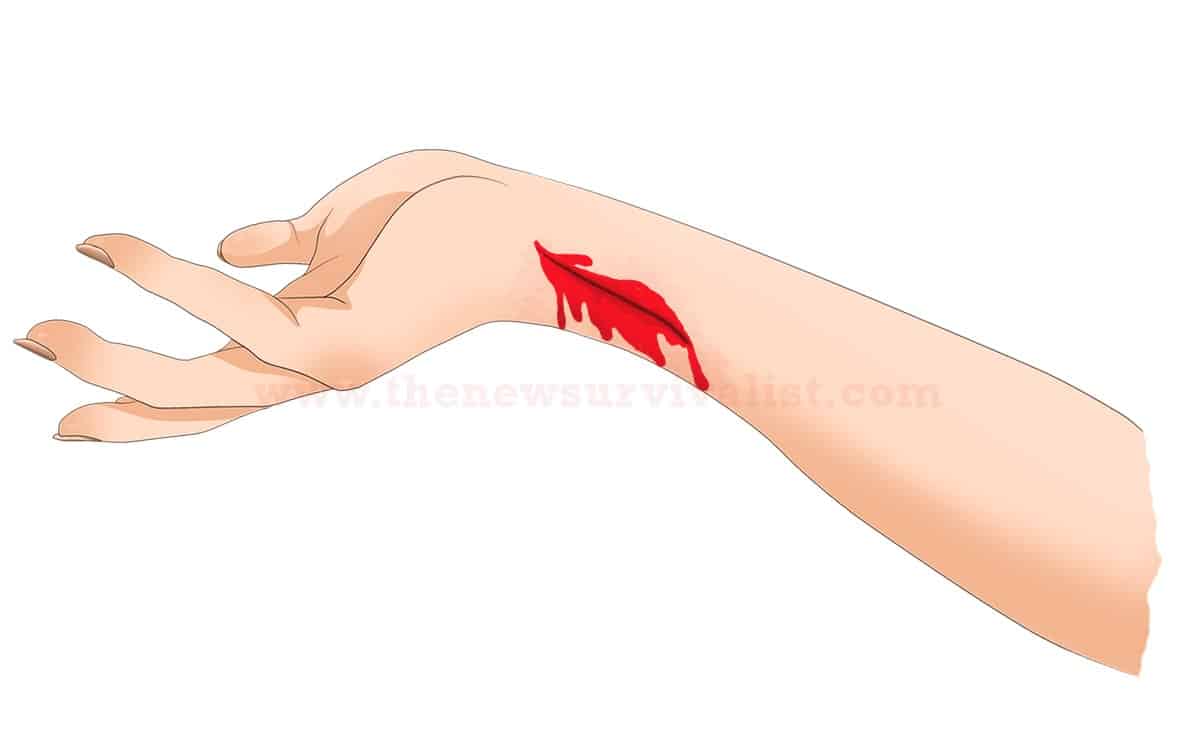
Veins are large elastic vessels, but compared to arteries they are thinner. It functions to deliver the unoxygenated blood back to the lungs for oxygenation. The pressure within these blood vessels is lower, however, they generally contain more volume of blood.
A venous bleed does not spurt out, its flow is steady. Blood is usually darker in color due to the lack of oxygen. Veins usually run parallel to arteries but are much nearer to the skin surface compared to arteries, which is why they are the ones commonly injured in shallow wounds.
Similar to arteries, shallow veins can be found in the neck, the armpit, the elbow, the wrist, and behind the knees. Despite not having high pressure, venous bleeding is still life-threatening due to the large volume of blood it can output.
Treatment
Venous bleeding can be stopped by applying direct pressure for a few minutes. This can be done by using cotton pads, gauze, or cloth. Unlike in arterial bleed, bandaging the wound, or using tape is enough to control the bleeding in shallow wounds.
Large and deep wounds tend to have a combination of venous and arterial bleed. As such, these wounds should also be packed tightly with cotton, gauze, or cloth even if there are no signs of arterial bleeding.
Capillary Bleeding
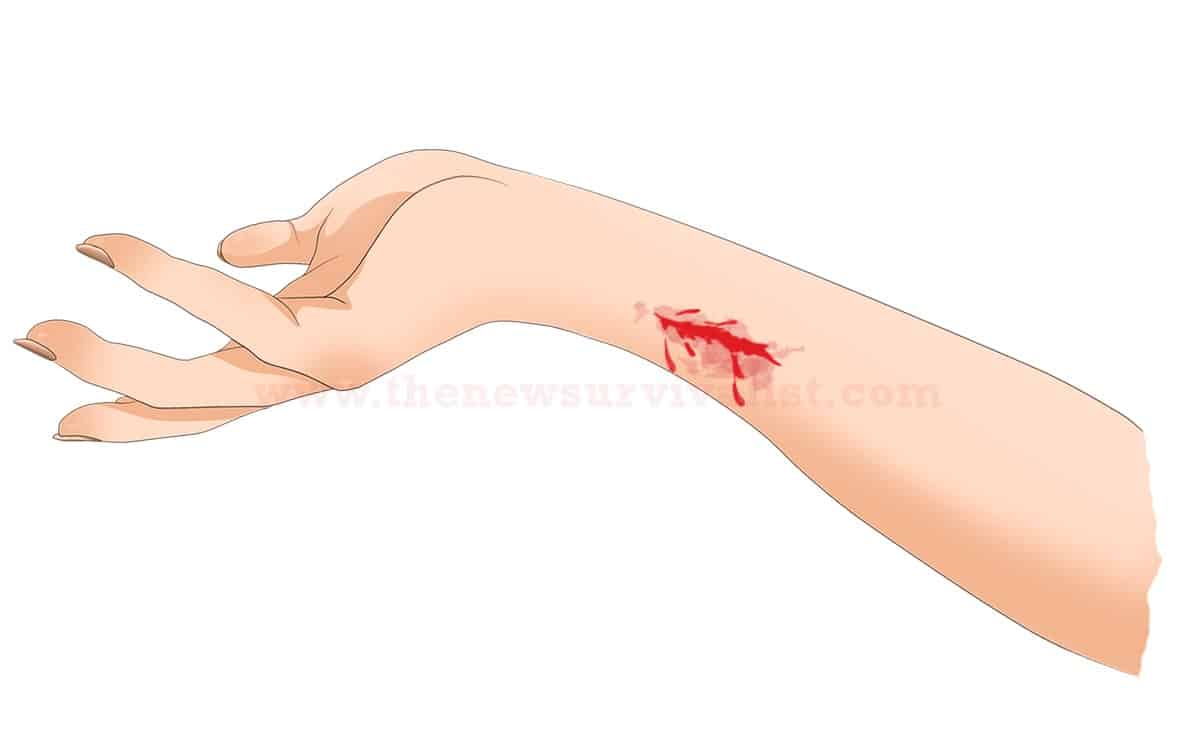
Capillaries are tiny blood vessels that bridge the arteries and the veins. These are the blood vessels present all over the body near the skin surface and the surface of the organs.
Capillary bleed occurs mainly on superficial abrasions and minor cuts. A capillary bleed will initially flow fast but eventually stops by itself. The blood can either be bright or dark in color.
Treatment
Applying pressure, or covering the wound using cotton, a gauze, or an adhesive bandage is enough to completely stop the bleeding within minutes.
Other Types of Bleeding
Aside from external bleeding, arterial, venous, and capillary bleeds can also occur internally. Internal bleeding is often due to blunt force trauma, where there is no apparent break in skin integrity.
Severe bleeding in the cranium can present as loss of consciousness, weakness of a body part, slurring of speech, severe pain, drooping of eyelids and the face, or an altered mental status.
Bleeding anywhere in the esophagus or the stomach can present as paleness, vomiting of blood, and in severe cases loss of consciousness. It can also present as black tarry stools on defecation.
A blunt force trauma to the abdomen can result in the rupturing of the liver, spleen, and kidneys. This results in severe internal bleeding which is a combination of arterial and venous bleed. Oftentimes, there are no external signs of injury.
Due to the close relation of veins and arteries with bones, high impact accidents such as falling, or motor vehicular collisions which results in fractured bones also results in internal bleeding within the muscle.
These cases cannot be treated outside of the hospital. But a good understanding of these signs and prompt response can be the line between life and death.
Complication and Sequelae of Uncontrolled Bleeding
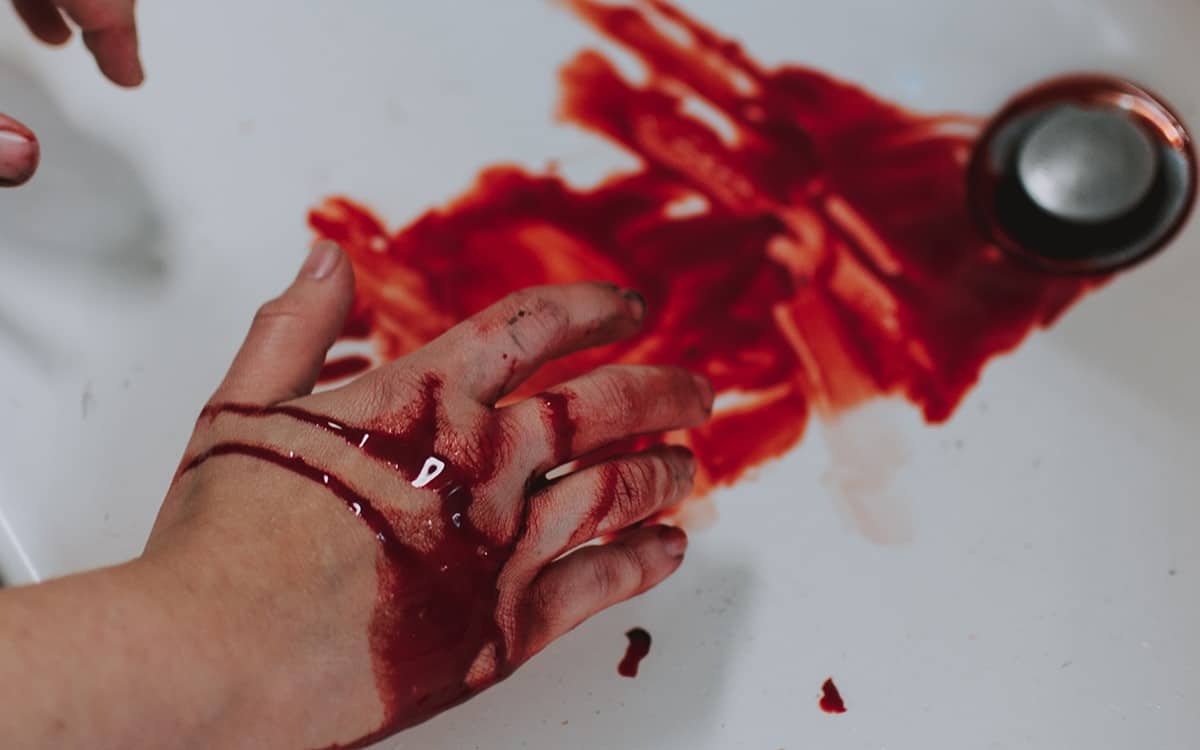
If bleeding fails to be controlled, it can lead to a condition called hypovolemic shock. This occurs when the total blood loss reaches more than 20 percent of the person’s total blood volume.
People suffering from hypovolemic shock often become pale, their skin becomes cold and clammy, they feel weak, become lethargic, and sometimes lose consciousness. The heart rate also increases greatly to try and compensate for the lack of blood.
If the hypovolemic shock and the bleeding are not controlled and reversed, multiorgan failure is imminent and the person can die.
In the end, prepping should not only include stockpiling supplies. Acquiring essential knowledge is also an important part of survival before SHTF. Preppers should learn to identify different life-threatening signs and symptoms and learn how to manage them.

